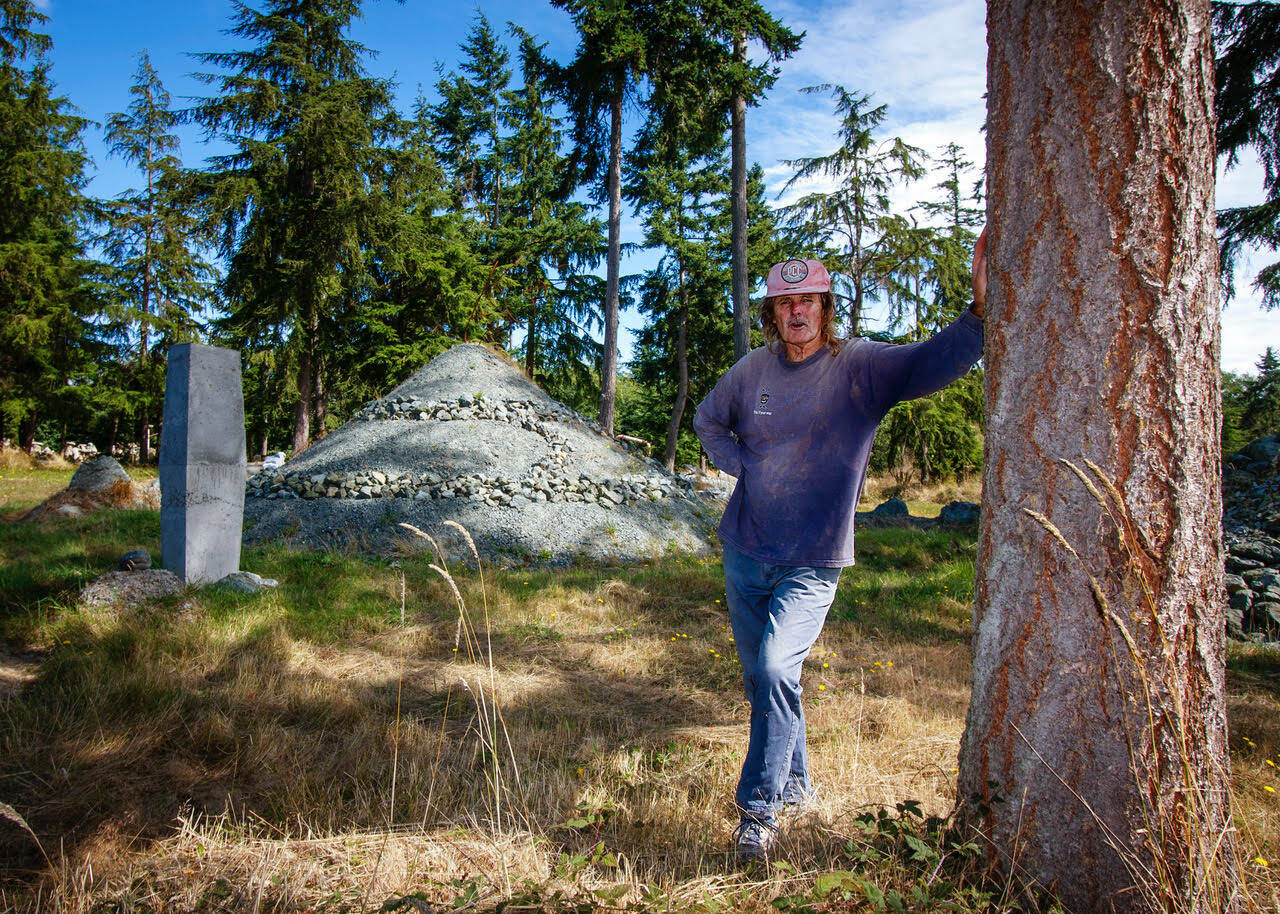Whidbey Island lost a pillar of its arts community this week.
Freeland resident and prolific sculptor Hank Nelson passed away Feb. 28 at the age of 84 after complications caused by pneumonia.
Nelson created Cloudstone Sculpture Park, a sprawling 20-acre estate and abstract art experience complete with more than 400 of his own sculptures, many of which have taken on massive forms. A hidden gem, the sculpture park is only open to the public a few times every year. Its last “open house” in 2021 attracted more than 300 visitors.
A nonprofit foundation formed a few years ago to spruce up the property and carry out Nelson’s vision of appreciation for three-dimensional art, which will continue posthumously.
“He was a fantastic guy. He was an unbelievable sculptor,” said Marty Matthews, a longtime friend who founded the Cloudstone Foundation with Nelson.
Many remember Nelson as a gentle, humble figure who liked to ask questions about other people. Although not able to sculpt as much as he advanced in age, his mind never stopped working.
Moe Jerome, a friend of Nelson’s and a board member for the Cloudstone Foundation, said he was entrusted with a “mile-long” list of future sculpture ideas that Nelson dreamed up before his death.
“I don’t know how you replace somebody like that,” Jerome said. “They’re so unique.”
Nelson was renowned for his large-scale installations, many of which double as social statements. He had been in the process of directing a new project, which involved humongous -– and unbelievably heavy — tube casings that may be the largest project of its kind in the country once completed.
“From our knowledge, there are very few sculptures in the states that will equal this in terms of its scale and its complexity,” said Don Wodjenski, another friend and board member of the Cloudstone Foundation.
Jerome said Nelson also had plans for a beautiful section of Wisconsin red granite. The bulk of his pieces in the sculpture park are abstract stonework which remain nameless.
Fellow sculptor Lloyd Whannell visited Cloudstone Sculpture Park several times over the years and was always amazed to find what Nelson was working on.
“Most of us stoneworkers, we work small compared to what Hank did,” Whannell said. “Hank was one of those people who worked large, and with great volume.”
During one of Whannell’s visits, he was amused to find the busy sculptor fast asleep while sitting on a bucket out in the field.
“He would have been out there working last week if he could have,” Whannell said.
Jerome remembers Nelson as someone who had a passion for food. It wasn’t often that he missed a hot meal from the Island Church soup kitchen in Langley.
“Hank was there both days,” Jerome said. “It was on his calendar.”
A late bloomer, Nelson didn’t pursue sculpting until later in his life. At the age of 20, he visited Bremerton during his time with the Navy. He wouldn’t return to the Pacific Northwest to live out his sculptor’s dream until decades later, starting in 1993 with his home on South Whidbey.
Apart from a stint with a master stone carver in Italy and some experimentation at the University of Washington iron foundry, Nelson was entirely self-taught.
In recent years, a variety of workshops have been offered in the studio space at Cloudstone Sculpture Park. Nelson’s educational legacy will continue.
“Hank really wanted to see an educational center at Cloudstone,” Wodjenski said. “He wanted an art center someplace where people could learn the three-dimensional arts, whether that was through wood or clay or stone or steel, whatever material they desired. He was anxious for them to experience the same joy of creation that he’s experienced over many years working with the arts.”
Wodjenski added that it was humbling to see Nelson show up as a student for some of the classes.
Besides Cloudstone Sculpture Park, Nelson’s sculptures can be seen all around Whidbey, including downtown Langley and at Greenbank Farm.
Burt Beusch, also a member of the foundation, said he will always remember “chauffeuring” Nelson around his park in a golf cart to discuss past work or future projects.
“More than pride, I would say he was mostly satisfied with his work and always hoped his ‘three dimensional’ pieces would influence new sculptors,” Beusch said.
“When he spoke, everybody listened,” Wodjenski said. “A man of few words, but meaningful words.”



